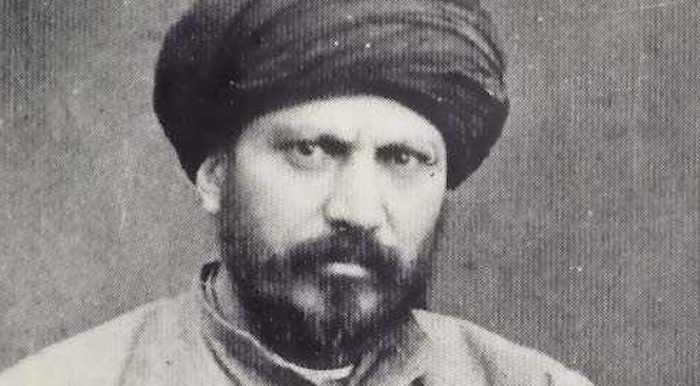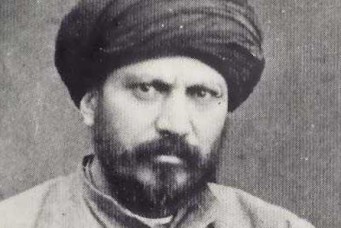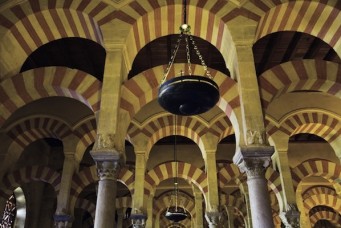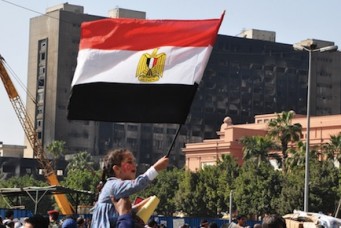A Struggle for the Soul of Islam
In the post-revolution MidEast, Islam isn’t only a refuge in a world in which all ideologies and systems have been crumbling, it’s also a powerful cause to be defended.

Muslim politician and scholar Jamal Al-Deen Al-Afghani (1838-1897). Wikimedia Commons.
Violent Islamism is not an aberrational accident in Arab and Islamic history. It has always followed the fall of the dominant order. It materialized in the periods that followed the fall of the Ottoman-Mameluke state in Egypt and the eastern Mediterranean in the early nineteenth century, after the crumbling of the Arab liberal age in the 1940s, and in the 1970s when secular Arab nationalism proved decisively unable to deliver on the grand ambitions it had given rise to. The current forms of violent Islamism, which rage across the eastern Mediterranean, North Africa, and increasingly in the Arabian Peninsula, attempt to fill the vacuum created by the fall of the Arab state order that had appeared after World War II and was rattled by the Arab uprisings. It also reflects deep anxieties and dilemmas within the Arab and Islamic worlds.
The Arab revolts of the last five years gave rise to an intense transition. It entails a fight between the pillars of the old system which have lost moral authority but retain many levers of power, and young forces which reject the old system but have limited resources and cannot agree, yet, on what frame of reference they want for their societies. The transition includes attempts by immensely rich merchant (and often ruling) families to secure their future at a time of dramatic economic changes, most notably as Middle Eastern oil is increasingly losing its strategic (and monetary) value. The transition marks the coming to the fore of the largest cohort in Arab history of Arab teens and twenty-and-thirty-somethings.
And crucially, the transition revolves round conflicts between different interpretations of Arab liberalism and nationalism; between Arabness and other ethnicities in the region; and between Arabness and Islamism (seeing specific old interpretations of Islamic theology and experiences as the primary, and often the sole, frame of reference for political legitimacy, legislation, social organization, economic undertaking, and identity). That such a complicated transition takes place at a compressed timeframe makes it highly disorienting for the societies undergoing it. The transition has also been unfolding under the gaze of hundreds of millions of Arabs and Muslims, watching it live on satellite channels and the Internet. They see for themselves the cruelty, terror, horror, and banality that accompany such a mega transformation.
This transition is further inflamed by an acute moral problem across the Arab and Islamic worlds. In less than five years, more than a quarter of a million Arabs were killed and close to four million have been displaced. And yet, the Arab and Islamic political and humanitarian responses have been dismal. This created not only a glaring disconnect between the millions of refugees now in the Eastern Mediterranean and North Africa and the rest of Arab societies, but also an emotional gulf within the Arab and Islamic worlds. On one side, there is havoc and desolation, and on the other, indifference and feigning normalcy. For many, this dichotomy is shocking and sickening.
The fall of the order that had dominated the region for decades, the bankruptcy of the old governing systems, disorientation, and repugnancy at the ubiquitous lethargy, all fuel anger. It manifests itself through a rush to the sole value system that, in the eyes of millions, has retained its integrity: religion. Both Middle Eastern Islamism and Christianism have been imbued with immense momentum over the past few years. And in both, the leading groups assumed the roles of either the savior (promising harmony and redemption at a time of chaos and falling certainties) or the martyr (evoking hatred and provoking vengeance, both strong intellectual and emotional anchors). It helped that the fights between Arab secularism and Islamism and between old and new powers have given the largest Islamist groups across the Arab World successive opportunities to assume the role of the victim. Here, Islam has become not only a refuge in a world in which all ideologies and systems have been crumbling; it also became a powerful cause to be defended.
The fall of competing ideologies offered the Islamists a historic opportunity. Arab liberalism, Arab nationalism, and Persian and Turkish top-down impositions of secularism (throughout most of the twentieth century), all have cannibalized the notion of the ummah (the Islamic community as an overarching social identity and political entity). This has always riled the Islamists; and for decades, the ambition of resuscitating the ummah has animated different Islamist groups. The fall of these political systems not only offered an opportunity for mainstream Islamist groups to attempt a peaceful Islamization of different countries; it enthused, and emboldened, other Islamists to try to resurrect the ummah by force.
Unlike mainstream Islamist groups, violent Islamists did not present various ideas to reconcile Islamism with modernity; and they did not try to assume the role of ordinary political actors. They have, simply, rejected all of what has taken hold in the Arab and Islamic worlds in the last two centuries as sinful and deviation from true Islam. In this view, their form of Islamism need not adapt to the experiences of their societies’ modern history, need not incorporate new concepts, and need not demonstrate any kind of tolerance to others, or to others’ beliefs, understandings, or ways of life. This absoluteness (purity, even) made it, for some, a stronger emotional haven and social refuge, than the qualified and guarded Islamism of the large Islamist groups.
Violent Islamism also strongly connected with a yearning for a return of Islamic ascendancy and dominion. For at least two centuries now, the Islamic World has failed to catch up with its historical “other,” Christendom. And though the notion of Christendom has been majorly diluted by the waves of modernity and intellectual and scientific advancement, Islamism was never extinguished in the Middle East. And so at a time of anxiety, fear, and vacuum, the call for defending Islam and asserting Islamism by force blended with an acute awareness of how weak and lethargic the Islamic World has been, as opposed to the West’s strength and eminence.
For tens of thousands of young Muslims, this assertive Islamism was also a form of opposition and objection to the West’s repeated interventions in the Islamic World. As the West came to directly control large parts of the Arab and Islamic worlds, from Afghanistan to Iraq (including Baghdad, one of the most illustrious capitals in the history of the Islamic civilization), Western attitudes to Muslim societies came to be seen as, at best condescending, at worst contemptuous.
The danger here transcends the thousands of deaths and enormous chaos that violent Islamism results in. The combination of the yearning for Islamic ascendancy and agitation at the West redefines the Islamic World’s long interaction with the West as one based on adversity and confrontation. This betrays a limited understanding of Islamic history. It reduces the Islamic World’s experience with modernity in the last two centuries to a struggle with colonialism, various geostrategic confrontations, and, as Samuel P. Huntington put it, “a clash of civilizations,” though in this case, it is reduced by the violent Islamists to its most basic and crudest form: killing in the name of a faith. This exacerbates the division within the Islamic World; it widens the polarization between the Islamists and the secularists to become one between those who see Islamic history through the growth and evolution of its civilization (which has benefited from and added to Western civilization), and those who ignore its rich path through long centuries and varied cultural interactions and restrict it to its earliest societies in the Arabian Peninsula and the Eastern Mediterranean in the seventh and eighth centuries. Here, Huntington’s “unceasing struggle between civilizations” becomes an unceasing struggle within the Islamic World.
Violent Islamism subjugates the myriad civilizational understandings of Islam to strict embracement of its earliest societies, and literalist interpretations of its theological sources. This repudiates all the intellectual innovations that Islamic thinkers developed to ensure that Islam remains a social framework, suitable for different ages and applicable in diverse societies. It renounces the work of the medieval Islamic philosophers who graduated Islamic thinking from its early desert origins and ushered it into the cosmopolitanism and intellectual richness of Persia, the Fertile Crescent, Egypt, and later southern Europe and the Indian subcontinent. It also rejects the work of modern thinkers, such as Jamal Al-Deen Al-Afghani and Mohamed Abdou, who founded ways of marrying traditional understandings of Islamic theology with ways of living in modern societies. Without this contribution, it is highly likely that Arab liberalism and nationalism would have become not only anti-Islamist, but also anti-Islam, similar to Kamal Atatürk’s secularism in Turkey. And so by disclaiming the Islamic civilization’s rich heritage and trying to impose early interpretations of Islam on today’s societies, violent Islamism is foolishly dragging the faith itself into a confrontation with modernity.
Abandoning the Islamic civilization’s opulent heritage also condemns the Islamic World to relive its past. It forces it to undergo the torturous experiences it had endured in the tenth century, and many times since then, of how to evolve an intrinsically flexible theological structure into a social and political frame of reference applicable in societies with vastly different historical experiences and cultural characteristics. Throughout these many experiences, the Islamic World endured various episodes of mass violence.
Some of that violence, though abhorrent, made sense. For example, in their successful endeavour to unite large parts of the Arabian Peninsula under the extremely conservative and highly literalist Wahhabi Islamic doctrine, Abdelaziz Al-Saud’s religious warriors had used chilling violence. Here, violence had a clear and viable objective: creating the Islamic Kingdom of Saudi Arabia. The social and political system that has anchored that Kingdom resonated with the historical experience and cultural characteristics of the communities that lived in that part of the Islamic World in the early decades of the twentieth century. There were similar examples in Islamic history when violence, repugnant as it always is, was an effective approach to realize a viable and sustainable objective. That was particularly true when the purpose for which that violence was perpetrated had inspired large swaths of people. Today, the violence adopted and promoted by various jihadist groups in North Africa and the Eastern Mediterranean, is senseless. Not only is their political objective (creating a seventh-century style state at the heart of the Arab World) unachievable; it is delusional. Resuscitating the earliest form of Islamic state, stripped from all the religious, historical, cultural, and moral features that made the original one a seed for a rich civilization, is not an objective that will inspire or resonate with any large group of Arabs or Muslims today.
The thinking of today’s violent Islamism also denies the Islamic World the major advancements in human and civil rights that large sections within most Islamic societies have come to see as basic freedoms. And it restrains these societies from seeking innovative ways for retaining their Islamic frame of reference (under whatever definitions) and, at the same time, accepting new milestones of human knowledge. Rigid thinking and circumscribed frameworks will render the majority of believing Muslims utterly detached from understandings that biology and physics are making increasingly irrefutable. This will not only entrench the Islamic World’s lethargy, but will gradually dilute the connection between millions of young Muslims (and coming generations) and Islam itself.
Over time, this will become a threat to the religion. The simplicity of violent thinking, the depravity it descends souls into, and the harshness and crudeness it engenders within societies, will impoverish and corrupt contributions to Islamic theology. The more this murderous thinking ingrains itself within the Islamic World, the less sophisticated the Islamic World will be in dealing with scripture and with its diverse set of sources. The result will be less ingenious ways of interpreting the sacred, precisely at the time when it will be under extreme scrutiny by new generations with vastly different social perspectives and scientific certainties. Today’s violent Islamism is arguably one of the most significant perils that the Islamic World, and Islam itself, has ever confronted.
Tarek Osman is a political economist focused on the Arab World and is the author of Egypt on the Brink. He was the writer and presenter of the BBC’s 2013 radio series “The Making of the Modern Arab World” and the 2015 radio series “Saudi Arabia: Sands of Time.” He is the political counselor for the Arab World at the European Bank for Reconstruction and Development. On Twitter: @TarekmOsman.




